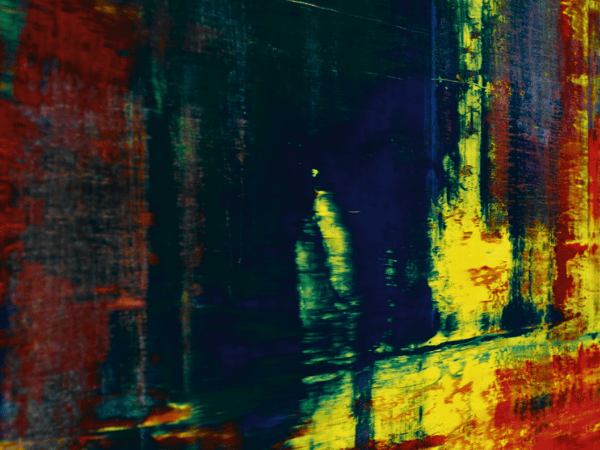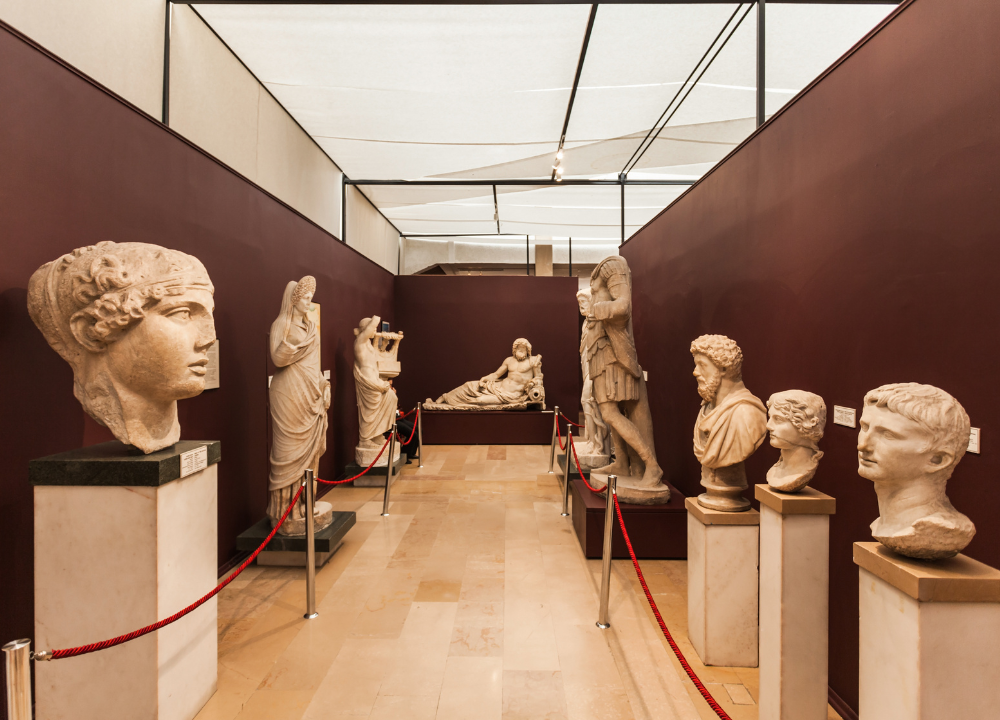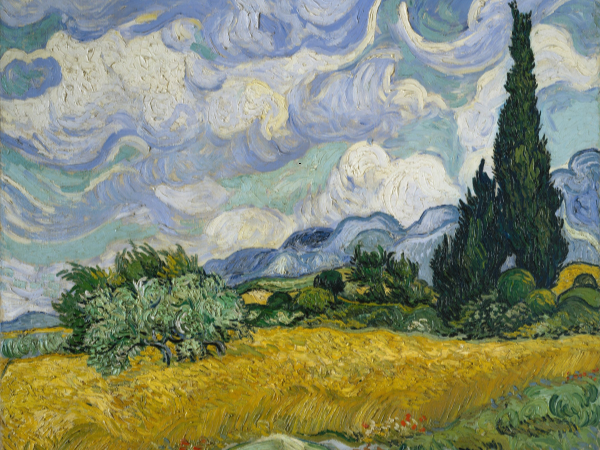Discover the captivating world of modern art through “Abstraktes Bild (809-4)” by Gerhard Richter. This stunning piece invites you to explore the depths of color, texture, and emotion.
Have you ever wondered what makes abstract art so powerful? As you delve into this article, you’ll uncover the unique techniques Richter uses to create a visual experience that resonates deeply. Imagine standing in front of this artwork, feeling the energy radiate from the canvas.
Artist Background
Abstraktes Bild (809-4) is a striking piece by renowned artist Gerhard Richter. Understanding his background helps us appreciate his unique style and vision. Richter’s life and experiences shaped his art, making it rich and complex.
Early Life
Gerhard Richter was born on February 9, 1932, in Dresden, Germany. His early years were marked by the turmoil of World War II. This influenced his perspective on art and life.
Richter grew up in a modest family. His father was a schoolteacher, and his mother worked as a homemaker. These humble beginnings instilled in him a strong work ethic.
Education And Influences
Richter studied at the Academy of Fine Arts in Dresden from 1951 to 1956. He was influenced by socialist realism during this time. Later, he moved to West Germany, where he encountered contemporary art movements.
He absorbed influences from various artists, including:
- Pablo Picasso
- Jackson Pollock
- Joseph Beuys
These influences helped shape his abstract style, paving the way for works like Abstraktes Bild (809-4).
Artistic Development
Richter’s career began in the 1960s. He gained fame for his photo paintings and abstract works. His approach often blurs the lines between realism and abstraction.
He experimented with techniques, such as:
- Layering paint
- Using squeegees
- Creating textured surfaces
These methods give his paintings depth and complexity. Abstraktes Bild (809-4) showcases his mastery of these techniques.

Legacy
Richter is considered one of the most significant artists of the 20th century. His work has had a lasting impact on contemporary art. He challenges viewers to engage with art in new ways.
Abstraktes Bild (809-4) stands as a testament to his innovative spirit. It invites exploration and interpretation, reflecting Richter’s journey as an artist.
Artwork Details
Understanding the details of this piece enhances appreciation and insight into Richter’s creative process. Let’s explore the key aspects of this artwork.
Title And Year
The title of this artwork is Abstraktes Bild, and it carries the number 809-4. It was created in the year 1994. This piece is part of Richter’s larger body of abstract work that focuses on the interplay of colors and forms.
Richter often explores the concept of abstraction, challenging viewers to find meaning in randomness. His titles often reflect simple descriptions. They invite viewers to engage without preconceived notions. Below are some important details about the title and year:
- Title: Abstraktes Bild (809-4)
- Year Created: 1994
Richter’s work often dates back to the 1960s. Yet, the 1990s mark a significant shift in his artistic direction. In this period, he embraced abstraction more fully. The tension between color and form in Abstraktes Bild (809-4) reflects this shift. It stands as a testament to his evolving vision.
Medium And Dimensions
Abstraktes Bild (809-4) was created using oil on canvas. This medium allows for rich textures and vibrant colors. Richter’s technique involves layering colors. He uses brushes, scrapers, and sometimes even squeegees to create depth. The dimensions of this artwork are 250 x 200 cm. This size makes a bold statement in any space.
Here are some key points regarding the medium and dimensions:
| Aspect | Details |
|---|---|
| Medium | Oil on canvas |
| Dimensions | 250 x 200 cm |
The use of oil paint allows for a smooth application. It also facilitates blending of colors. This technique creates an organic flow within the piece. The large dimensions capture attention.
Artistic Style
This piece reflects Richter’s exploration of abstraction. His work blends colors, textures, and forms. It invites interpretation and emotional response. The painting represents a significant moment in contemporary art.
Abstract Expressionism
Abstract Expressionism is a movement that emerged in the mid-20th century. It emphasizes spontaneous, automatic, or subconscious creation. Richter’s Abstraktes Bild (809-4) fits well within this movement. The painting showcases the following characteristics:
- Emotional intensity: The colors evoke strong feelings.
- Personal expression: Each viewer interprets the piece differently.
- Non-representational forms: The artwork does not depict recognizable objects.
This style allows for freedom in artistic expression. Artists often use bold colors and dynamic brushstrokes. They aim to convey emotions rather than realistic scenes. Richter’s work challenges viewers to engage with the art on a deeper level.
Here is a comparison of key features of Abstract Expressionism:
| Feature | Description |
|---|---|
| Spontaneity | Emphasis on the process of creation |
| Color | Use of vibrant, contrasting colors |
| Scale | Often large-scale works that overwhelm the viewer |
Richter’s Techniques
Richter employs several innovative techniques in Abstraktes Bild (809-4). His methods enhance the visual impact of the work. Key techniques include:
- Layering: Richter applies multiple layers of paint. This adds depth and complexity.
- Blurring: He uses a squeegee to create soft edges. This technique gives a sense of movement.
- Color blending: Richter mixes colors directly on the canvas. This technique achieves a rich, fluid appearance.
These methods create a unique texture. The viewer can see the physicality of the paint. The result is a vibrant interplay of color and form. Each brushstroke tells a story, inviting viewers to explore the artwork.
Visual Analysis
A visual analysis reveals how these elements create a compelling experience. Understanding the colors and composition helps appreciate Richter’s innovative approach.
Color Palette
The color palette of Abstraktes Bild (809-4) plays a vital role in its impact. Richter uses a mix of vibrant and muted tones, creating depth and intrigue. The colors blend seamlessly, evoking various emotions. Here are some key features:
- Dominant Colors: Rich reds, deep blues, and soft whites.
- Contrast: The bright colors stand out against the darker shades.
- Harmony: The colors work together to create a unified look.
This palette does more than please the eye. It stimulates feelings and thoughts. The way colors flow into each other suggests movement and energy. Some viewers may feel calm, while others may sense chaos. This duality adds depth to the painting. Below is a simple table showing the main colors used:
| Color | Emotion |
|---|---|
| Red | Passion, intensity |
| Blue | Calm, serenity |
| White | Purity, space |
Overall, the color palette of Abstraktes Bild (809-4) is essential in shaping its meaning and emotional resonance.
Composition Elements
The composition of Abstraktes Bild (809-4) is a fascinating study of balance and tension. Richter uses various techniques to guide the viewer’s eye. The arrangement of colors and forms creates a dynamic interaction. Key elements include:
- Layering: Multiple layers of paint add depth.
- Brush Strokes: Varied strokes create texture and rhythm.
- Spatial Arrangement: Colors are placed to draw attention.
Richter’s use of layering is particularly striking. It creates a sense of movement, as if the painting is alive. The brush strokes vary from soft and gentle to bold and aggressive. This contrast enhances the visual interest.
The spatial arrangement adds another layer of complexity. Colors are not randomly placed. Each hue has a purpose. They interact, creating harmony and tension. This interplay invites viewers to explore the painting further.
Cultural Context
The cultural context surrounding this artwork is rich and complex. It reflects not only Richter’s personal journey but also the broader movements in art and society during his time. This piece invites viewers to explore emotions and ideas beyond traditional representation.
Art Movements In The 20th Century
The 20th century was a time of great change in art. Many movements emerged, each with its own ideas. Here are some key movements:
- Expressionism: Focused on emotions and personal experience.
- Abstract Expressionism: Emphasized spontaneous and automatic creation.
- Pop Art: Drew inspiration from popular culture and mass media.
- Minimalism: Highlighted simplicity and reduction of form.
- Conceptual Art: Focused on the idea behind the artwork, rather than the art itself.
Richter’s work embodies elements from several of these movements. His abstract pieces challenge the viewer’s perception. They blur the lines between reality and abstraction. Richter uses color and texture to evoke feelings rather than depict objects. This approach aligns with the ideas of Abstract Expressionism and Minimalism.
Here’s a table showing the key features of these movements:
| Art Movement | Key Features |
|---|---|
| Expressionism | Emotional depth, bold colors |
| Abstract Expressionism | Spontaneous, gestural brushwork |
| Pop Art | Use of popular images, irony |
| Minimalism | Simplicity, focus on form |
| Conceptual Art | Emphasis on ideas, not objects |
Richter’s Influence
Gerhard Richter has had a lasting impact on contemporary art. His unique style and techniques inspired many artists. Richter’s ability to blend different styles keeps his work relevant. He encourages artists to explore beyond traditional boundaries.
Richter’s approach to abstraction is notable. He often uses a squeegee to manipulate paint on canvas. This technique creates unexpected textures and patterns. It invites viewers to engage with the artwork on a deeper level. Many artists admire this method.
Richter’s influence extends to various fields, including:
- Painting
- Photography
- Installation art
Richter shows that art can be a reflection of society. His works address themes of memory, identity, and history. This relevance attracts both critics and collectors. Richter’s ability to provoke thought has made him a key figure in modern art.




